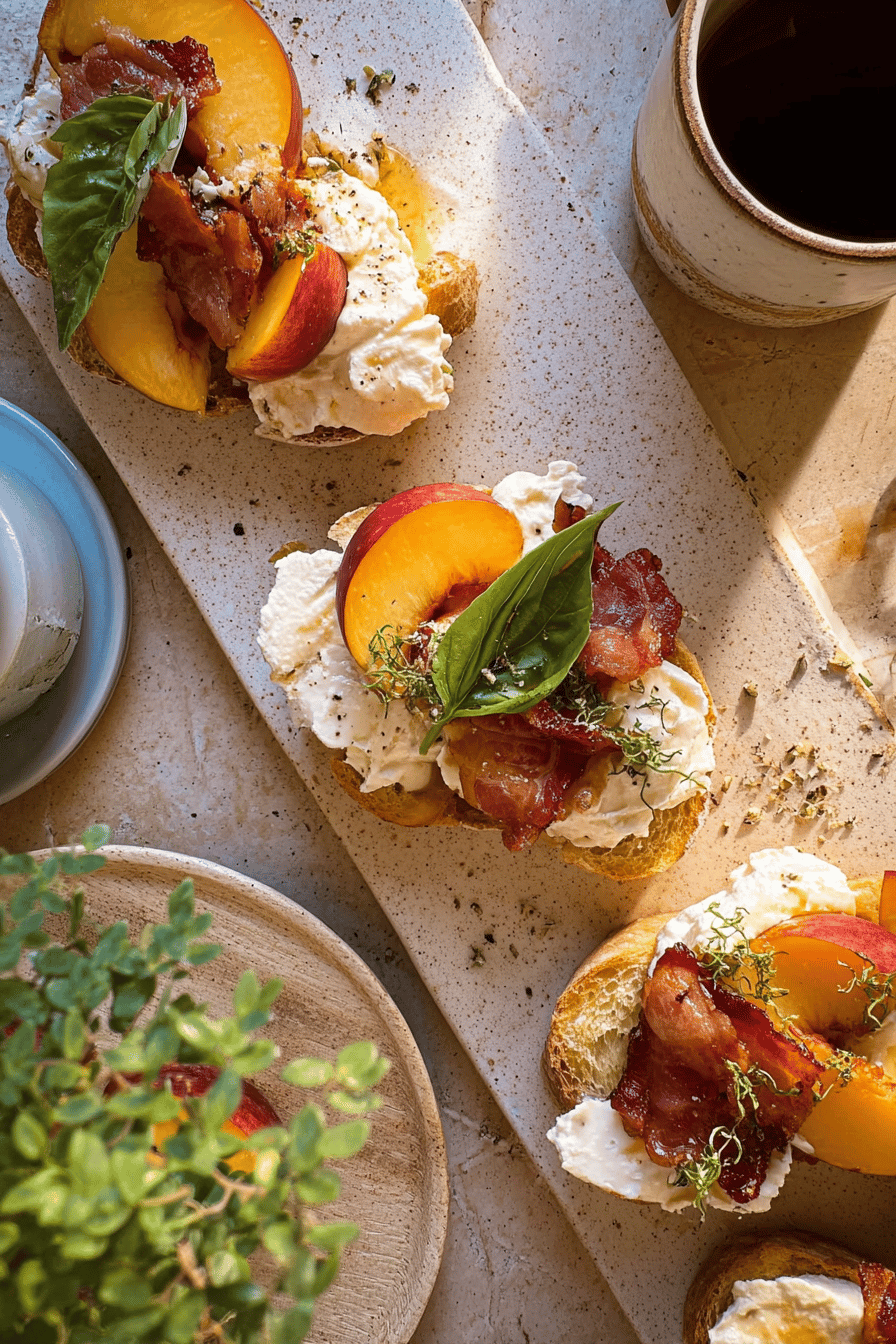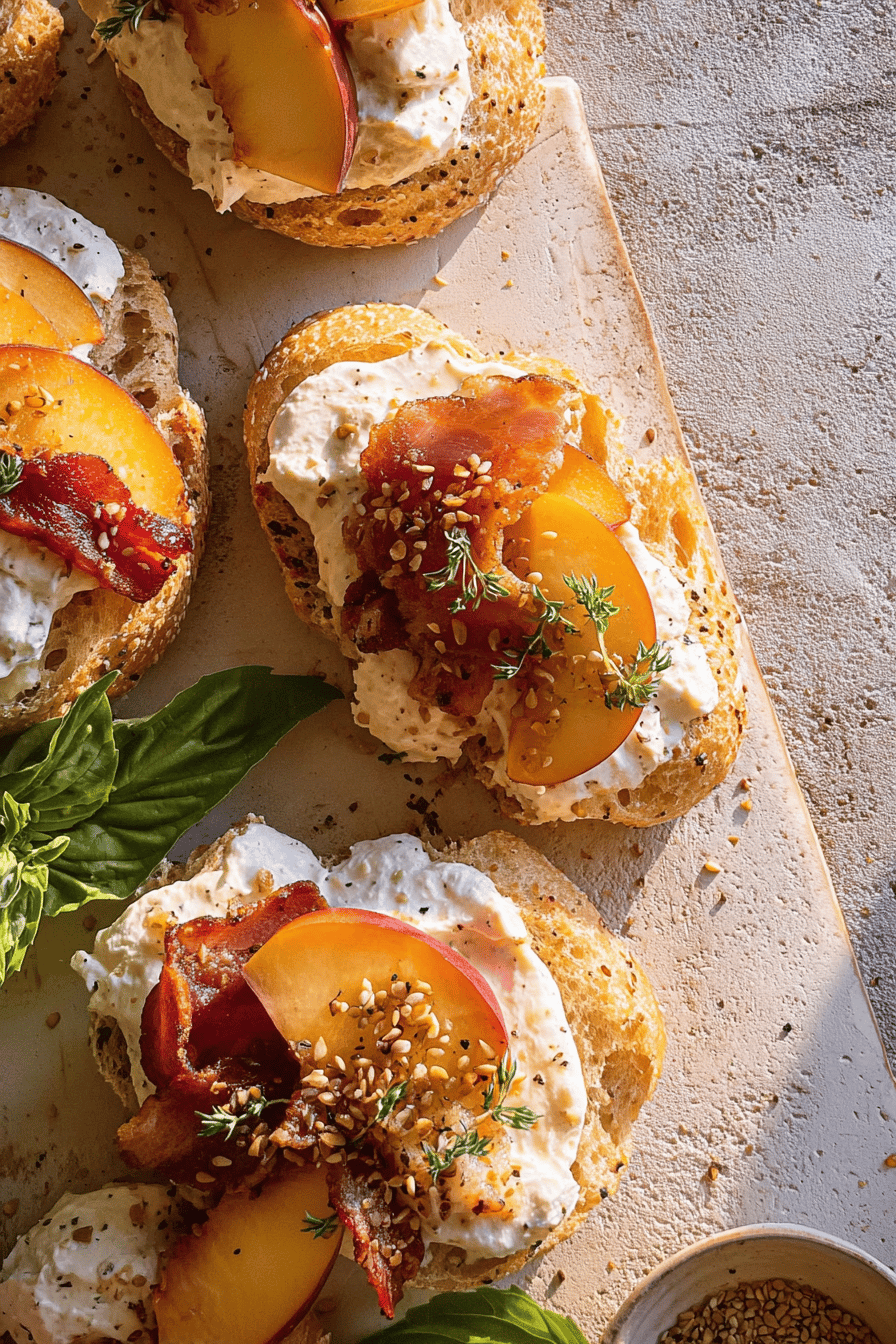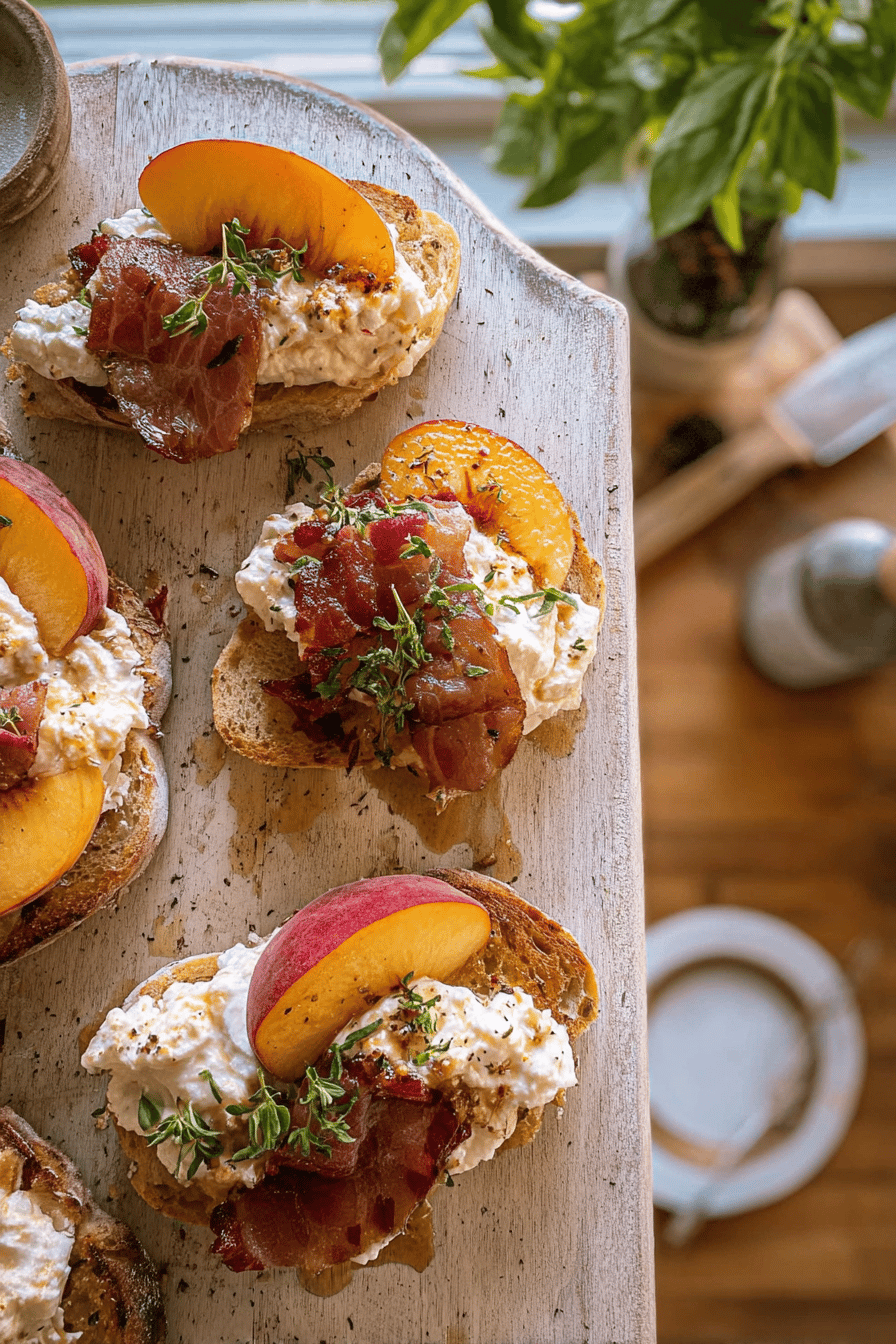Why You’ll Love This August Recipes
August brings a wave of fresh and vibrant flavors that make cooking fun and rewarding. This recipe stands out for its ease of preparation, ideal for busy weeknights when time is limited. You’ll appreciate how the fresh, seasonal ingredients deliver health benefits like vitamins and antioxidants to boost your wellness.
Plus, the dish offers great versatility to fit different dietary needs. This makes it a go-to option for creating tasty meals that everyone can enjoy.
Key Features
- Ease of preparation: This recipe is designed for simplicity and quick cooking times, making it perfect for busy weeknights or when you want a delicious meal without spending hours in the kitchen.
- Health benefits: Packed with fresh, seasonal ingredients, these August recipes offer excellent nutritional advantages including vitamins, minerals, and antioxidants that support overall wellness.
- Versatility: Adaptable to various dietary needs, you can easily modify the recipe to suit vegan, gluten-free, or low-calorie preferences without compromising on taste.
- Distinctive flavor: The unique combination of herbs and spices gives the dish a standout flavor profile that makes it memorable and satisfying.
This recipe ties into the summer season with its light and refreshing approach, perfect for your peach cobbler inspired twists for added sweetness.
Jump To
- 1. Why You’ll Love This August Recipes
- 2. Essential Ingredients for August Recipes
- 3. How to Prepare the Perfect August Recipes: Step-by-Step Guide
- 4. Dietary Substitutions to Customize Your August Recipes
- 5. Mastering August Recipes: Advanced Tips and Variations
- 6. How to Store August Recipes: Best Practices
- 7. FAQs: Frequently Asked Questions About August Recipes
- 8. August Recipes
Essential Ingredients for August Recipes
Choosing the right ingredients is key to capturing the essence of August’s fresh produce. This section lists everything needed for a flavorful dish. Each item includes precise measurements to help you prepare with ease.
Structured Ingredient List
- 3 cups Fresh tomatoes – Adds juiciness and rich antioxidants.
- 2 tablespoons Olive oil – Enhances flavor and supports heart health.
- 4 cloves Garlic – Boosts immune function and adds depth.
- 1/4 cup Fresh basil – Provides a fragrant, herbal note and antioxidants.
- For vegan option: Use coconut oil instead of olive oil.
- For gluten-free option: Ensure all seasonings are certified gluten-free.
- For low-calorie option: Substitute olive oil with a low-calorie cooking spray for lighter meals.
This list covers all essentials, making it simple to shop and cook. Fresh tomatoes and basil bring out the best of summer vibes in your meals.
How to Prepare the Perfect August Recipes: Step-by-Step Guide
Getting started with August recipes involves simple steps that highlight fresh flavors. First, gather and wash all fresh vegetables and herbs to ensure cleanliness and optimal flavor. This sets the stage for a dish that feels both healthy and satisfying.
Next, chop tomatoes and garlic finely to release their full aromatic benefits. Then, heat olive oil in a pan over medium heat for about 3-4 minutes and sauté garlic until golden, taking care not to burn it.
Step-by-Step Breakdown
- Gather and wash all fresh vegetables and herbs to ensure cleanliness and optimal flavor.
- Chop tomatoes and garlic finely to release their full aromatic benefits.
- Heat olive oil in a pan over medium heat for about 3-4 minutes and sauté garlic until golden, taking care not to burn.
- Add chopped tomatoes, cook on medium heat for 10 minutes until softened and flavors meld.
- Stir in fresh basil and season with salt and pepper to taste.
- For vegan adaptation, replace olive oil with coconut oil and monitor cooking temperature to maintain flavor.
- For a gluten-free version, verify that seasonings and all added ingredients contain no gluten.
- Serve hot, garnished with additional fresh basil or a sprinkle of nutritional yeast for an added flavor boost.
Each step keeps things simple while weaving in August recipes naturally. For more ideas on seasonal twists, check out this strawberry rhubarb pie filling to inspire your next creation.
This guide spans the preparation process with tips for efficiency. It emphasizes fresh produce to make your cooking experience enjoyable and effective.
Dietary Substitutions to Customize Your August Recipes
Making adjustments for different diets is straightforward with August recipes. Consider tofu or tempeh as excellent plant-based protein substitutes that maintain texture and absorb flavors well. This helps cater to vegan preferences while keeping meals tasty.
Use grilled chicken or fish for a lean protein variation, ideal for omnivorous tastes. For vegetable and sauce changes, swap traditional tomato sauce with a roasted red pepper sauce for a fresh twist.
Customization Options
- Protein and Main Component Alternatives: Consider tofu or tempeh as excellent plant-based protein substitutes that maintain texture and absorb flavors well. Use grilled chicken or fish for a lean protein variation, catering to omnivorous preferences.
- Vegetable, Sauce, and Seasoning Modifications: Swap traditional tomato sauce with a roasted red pepper sauce for a different flavor profile. Introduce seasonal vegetables like zucchini or eggplant to diversify textures and nutrients. Adjust seasonings by using herbs like oregano or cilantro based on regional tastes or dietary needs.
This approach ensures everyone can enjoy the dish. It adds flexibility to your August recipes for better inclusivity.
Mastering August Recipes: Advanced Tips and Variations
To elevate your skills, try pro cooking techniques like using a slow-cooking method to deepen flavors. You can also finish dishes under a broiler for a caramelized top that adds visual appeal. Experiment with flavor variations by adding spices such as smoked paprika or cumin for extra warmth.
Presentation tips include garnishing with microgreens or edible flowers to make your meal look inviting. For make-ahead options, prepare sauce and chop vegetables ahead of time to cut down on daily prep.
Expert Advice
| Technique | Benefit |
|---|---|
| Slow-cooking | Deepens flavors for richer taste |
| Broiling | Creates a caramelized top for appeal |
| Spice experiments | Adds complexity and warmth |
This section helps you refine your August recipes with creative ideas.
How to Store August Recipes: Best Practices
Proper storage keeps your meals fresh and safe. Store cooked recipes in airtight containers within 2 hours of preparation, and aim to consume them within 3-4 days in the fridge. Freezing works well too, as you can portion into freezer-safe containers for up to 3 months.
When reheating, gently warm on medium heat or use a microwave at intervals to prevent overcooking. Don’t forget meal prep considerations like labeling containers with dates and ingredients for easy management.
- Refrigeration: Store cooked recipes in airtight containers within 2 hours of preparation, best consumed within 3-4 days.
- Freezing: Portion into freezer-safe containers to maintain freshness, suitable for up to 3 months.
- Reheating: Gently reheat on medium heat or microwave at intervals to avoid overcooking.
- Meal prep considerations: Label containers with dates and ingredients to manage batch cooking efficiently.
These practices help preserve quality and support your routine.

FAQs: Frequently Asked Questions About August Recipes
What are some easy and fresh recipes perfect for August produce?
August offers a bounty of fresh produce like tomatoes, zucchini, corn, and peaches. Simple recipes include Caprese salad with fresh mozzarella and ripe tomatoes, grilled corn on the cob with herb butter, sautéed zucchini with garlic and lemon, and peach cobbler using fresh peaches. These dishes highlight seasonal ingredients, require minimal cooking, and are ideal for warm weather meals.
How can I preserve August fruits and vegetables to use later?
To extend the life of August’s fresh produce, consider freezing, canning, or pickling. For example, tomatoes can be canned as sauce or diced and frozen. Zucchini can be spiralized and frozen or pickled. Peaches can be sliced and frozen for smoothies or baked goods. Proper storage, like keeping leafy greens in airtight containers with a paper towel, also helps maintain freshness in the fridge.
What are healthy August recipes suitable for meal prep?
Grilled chicken with roasted vegetable trays, quinoa salad with corn and black beans, and chilled cucumber and tomato gazpacho are all healthy choices that store well. These recipes maximize August’s fresh produce and provide balanced nutrition. Preparing ingredients in bulk and dividing servings into containers makes them ideal for easy grab-and-go meals throughout the week.
Can you suggest vegetarian or vegan August recipes using seasonal ingredients?
Many August recipes naturally fit vegetarian or vegan diets. Options include grilled vegetable kebabs with zucchini, bell peppers, and cherry tomatoes; corn and avocado salad with lime dressing; and peach salsa served over quinoa or rice. These recipes are flavorful, nutrient-dense, and perfect for enjoying summer produce without animal products.
What are some kid-friendly August recipes that use summer fruits and vegetables?
Kid-friendly recipes include homemade berry popsicles, zucchini fritters, sweet corn muffins, and peach smoothies. These dishes are colorful, tasty, and easy to prepare. Using natural sweetness from fruits encourages kids to enjoy fresh produce, and involving them in simple preparation can increase their interest in healthy eating during summer.

August Recipes
- Total Time: 30 minutes
- Yield: 4 servings 1x
- Diet: Vegetarian, Gluten‑free
Description
🍅 Celebrate August with bright tomatoes, sweet corn, and tender zucchini for a burst of summer freshness.
🌿 This easy, one‑bowl meal is nutritious, gluten‑free, and ready in under 30 minutes.
Ingredients
3 cups Fresh tomatoes Adds juiciness and rich antioxidants
2 tablespoons Olive oil Enhances flavor and supports heart health
4 cloves Garlic Boosts immune function and adds depth
1/4 cup Fresh basil Provides a fragrant, herbal note and antioxidants
Instructions
1-Gather and wash: Gather and wash all fresh vegetables and herbs to ensure cleanliness and optimal flavor.
2-Chop: Chop tomatoes and garlic finely to release their full aromatic benefits.
3-Heat and sauté: Heat olive oil in a pan over medium heat for about 3-4 minutes and sauté garlic until golden, taking care not to burn.
4-Add and cook: Add chopped tomatoes, cook on medium heat for 10 minutes until softened and flavors meld.
5-Stir and season: Stir in fresh basil and season with salt and pepper to taste.
6-Vegan adaptation: For vegan adaptation, replace olive oil with coconut oil and monitor cooking temperature to maintain flavor.
7-Gluten-free version: For a gluten-free version, verify that seasonings and all added ingredients contain no gluten.
8-Serve: Serve hot, garnished with additional fresh basil or a sprinkle of nutritional yeast for an added flavor boost.
Notes
🌽 Roast or grill the corn for a deeper smoky flavor if you have extra time.
🧂 Taste the dressing before adding; adjust lemon, honey, or salt to suit your palate.
❄️ This bowl keeps well; the quinoa absorbs flavors over time, making leftovers even tastier.
- Prep Time: 10 minutes
- Cook Time: 15 minutes
- Category: Main Dish
- Method: Grilling / One‑pot
- Cuisine: American
Nutrition
- Serving Size: 1 cup
- Calories: 350
- Sugar: 6 g
- Sodium: 210 mg
- Fat: 10 g
- Saturated Fat: 1.5 g
- Unsaturated Fat: 7 g
- Trans Fat: 0 g
- Carbohydrates: 55 g
- Fiber: 5 g
- Protein: 12 g
- Cholesterol: 0 mg
Keywords: August recipes, fresh seasonal, easy meals, summer quinoa bowl


